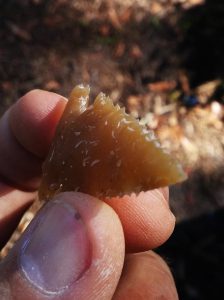 Hunting turkeys with traditional/primitive gear presents a new special set of problems. Depending on your goals, you can aid your success with certain modern advancements like popup blinds, head to toe camo, or lighter weight bows that can be held longer so the shooter can draw and hold when the turkey’s head is hidden. Those techniques certainly sway the odds in the hunter’s favor but some of us seek a tougher challenge in hunting birds. Getting turkeys in front of you can be relatively easy if you are already an accomplished turkey hunter, but getting one permanently on the ground is a different story. Hopefully some of these tips will help you in killing your bird the primitive way. I have shot a bunch of gobblers over the years but nothing has compared to the challenge of killing a turkey on open ground with no commercial camouflage or popup blind, let alone a primitive bow and stone points.
Hunting turkeys with traditional/primitive gear presents a new special set of problems. Depending on your goals, you can aid your success with certain modern advancements like popup blinds, head to toe camo, or lighter weight bows that can be held longer so the shooter can draw and hold when the turkey’s head is hidden. Those techniques certainly sway the odds in the hunter’s favor but some of us seek a tougher challenge in hunting birds. Getting turkeys in front of you can be relatively easy if you are already an accomplished turkey hunter, but getting one permanently on the ground is a different story. Hopefully some of these tips will help you in killing your bird the primitive way. I have shot a bunch of gobblers over the years but nothing has compared to the challenge of killing a turkey on open ground with no commercial camouflage or popup blind, let alone a primitive bow and stone points.
Before we go to far, I’d like to mention that getting a stone point to penetrate a wild turkey’s wing is nearly impossible. The ft/lbs of energy it takes to penetrate the wing with a stone point is the same or greater than the weight of the bird. On multiple occasions I’ve made a square hit on a turkey’s wing with the same bow and arrows I’ve shot pass throughs on deer with, only to see the arrow knock the turkey off its feet but fail to enter the body. This is something we don’t usually encounter with metal points so special attention should be made to avoid the broadside wing shot.
I am not a big fan of natural material blinds. That isn’t to say they don’t work, because they do to a certain degree. Animals in general (from my experience) like to look right into the thickest areas to try to identify danger. It seems to me that once an animal has looked into the open woods and not seen anything out of place, they tend to feel confident that they have seen it all. That does not however seem the case with brushy spots. Animals tend to keep focused on those spots as that is where danger often lay awaiting. I’ve been busted far more when trying too hard to hide. Nowadays I preach the benefits of hiding in plain sight. I prefer to simple use a large tree to help break up my outline. As stated previously, I believe that once a turkey has looked at a relatively open area and seen no danger, they are more willing to overlook you in the future.
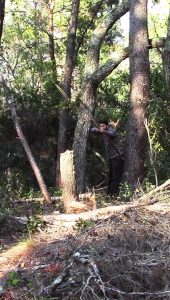
Ryan Gill hiding in plain sight while bowhunting wild turkey in the Florida scrub lands.
I also like to remain standing. By sitting down on the ground, and especially in a chair, we turn into a big blob on the forest floor. Turkeys are used to looking for bobcats and coyotes and it just so happens that those predators are the same height as your sitting body. By standing and elongating our bodies we eliminate that forest floor blob effect and we can blend into that tree trunk more efficiently. I’ve done some self filming of myself in the woods after being repeatedly busted by animals while crouching low to the ground. It opened my eyes to how much better we actually hide by staying standing. If you’ve seen my hunting videos (if not you better go give ’em a watch), you know I like to wear brown pants, moccasins, and native print inspired shirts. The shirts I wear have some great pattern characteristics that help break up my outline. Normally I like reds, oranges, and yellows but in turkey season I try to stick to brown and black patterns with a little white mixed in. If you remain still, that is all that you need to remain hidden.
Creating blind spots is also a great way to increase your odds. While not a big fan of constructed blinds, I do however love using brush, moss, and palm fronds to create blind spots about half way between myself and where I expect the birds to walk. That gives me a good place to get ready for the shot when they step into the clear. I usually have favorite spots in which I am usually confident where birds should come from. I continue to add fresh vegetation throughout the seasons to my blind spots to not only thicken them up, but to help them continue to look like part of the natural environment. Eventually I have some pretty nice obstructions in place that help keep me hidden until it’s time to draw and shoot. The only time I am in the real open to their direct sight is when they are in my planned shooting lanes. Sometimes the first glimpse of movement sends birds putting and running. Often times however, when that slight movement comes from a spot they previously deemed as safe, they “up para-scope” with their head and give you about 2-3 seconds of curiosity stare down before they fly the coup. If you are already up and ready, picking a spot and drawing, that arrow is usually on it’s way before they react.
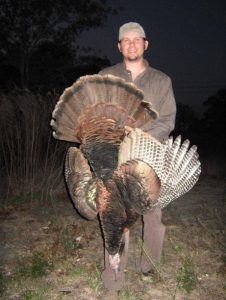 If you’re like me and like to leave the store bought gear at home (I also call mostly with just my voice, by the way) and try to kill game the toughest way possible for the ultimate reward of success, you’ll learn that turkeys on the ground with no camouflage, no popup blinds, and primitive equipment will be among the toughest animals to hunt in North America. Let’s just be glad they can’t smell like a deer does and circle downwind or we’d might as well just take up fishing instead.
If you’re like me and like to leave the store bought gear at home (I also call mostly with just my voice, by the way) and try to kill game the toughest way possible for the ultimate reward of success, you’ll learn that turkeys on the ground with no camouflage, no popup blinds, and primitive equipment will be among the toughest animals to hunt in North America. Let’s just be glad they can’t smell like a deer does and circle downwind or we’d might as well just take up fishing instead.
To check out some of the equipment I use, head on over to www.gillsprimitivearchery.com.
Ryan Gill

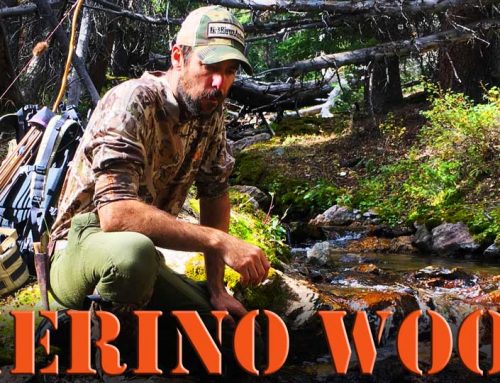
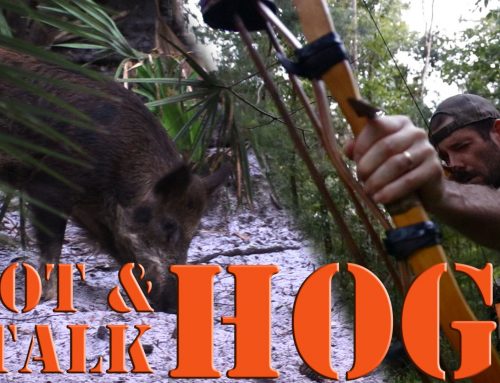
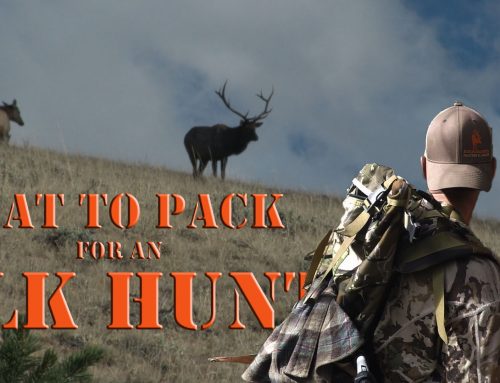
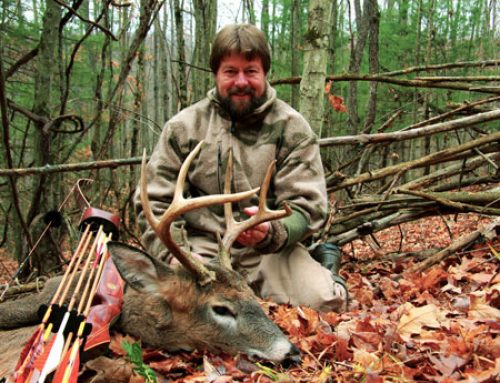
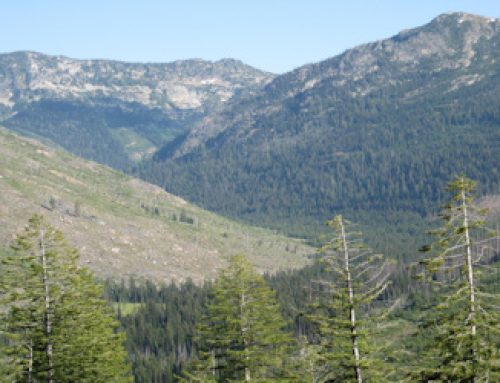
Very good tips and I agree, but you will get a lot of push back from the folks that sell camo for a living.
I enjoyed that. I find it quite a challenge playing “cat and mouse” with the Rio Grande turkeys in the sagebrush and mesquite country that I hunt in.
I have co-hosted Ryan on some of his early primitive pig hunting adventures, have enjoyed one of his books that our mutual fruend Jim shared eith me. Ryan knows his stuff.
This is an interesting read.
Great information on how to increase the chances of fooling a wary gobbler. I picked up some ideas and will try some of your tactics on future hunts. I love hunting gobblers so thanks for the tips.
As always, a great article Ryan.
Great read Ryan i like your approach, i never thought about the blind spot heck of an idea
Very good I have never been turkey hunting would sure like to give it atry
Great article Ryan. I have yet to hunt turkey with bow but great tips for the future. Right now the weather is warming up in northwest Florida and the fishing, spearfishing, crabbing, clamming and other water-borne passions are blooming. Thanks for bringing this to me Clay. Always best to you brother.
Good article Ryan. I especially like the blind spot idea.I agree on how turkeys will often dismiss areas they’ve already deemed safe.I’ll bet it would be tough to get a clean atlatl throw on a turkey! But, hey you never know?
Good article Ryan. Thoroughly concur with your comment of ‘hiding in plain sight’.
We’ve got plenty Turkeys here in UK but unfortunately none of the feathered variety. Even if we did we couldn’t take them with a bow because its illegal here.
Never mind, thanks anyway.
Good Article. USe todayS Expadable razor SharP BH . MUZZY MORE 3 ” FOR HEAD sHOTS Rage, Muzzy Trocar Hybrid ( 2 blade Fixed 2 blAde 2 ” 5/8 )
Expandable for Gobblers. TAKEN THE N am Slam with bow FOR all 4 . 92 turkey TOTAL
I really enjoyed your article Ryan. It made me think about my hunting style, which is similar to yours as far as keeping the set up simple. Thinking back on past hunts, it seems as though your experiences are also very similar.
Great article Ryan. I’ve been chasing turkeys here in Wisconsin for many years and some of my best encounters have been standing just inside a stand of pine at the edge of a field. Missed quite a few, but as you stated it’s about the challenge. PK
Great article and great tips. Have a blessed week!!!